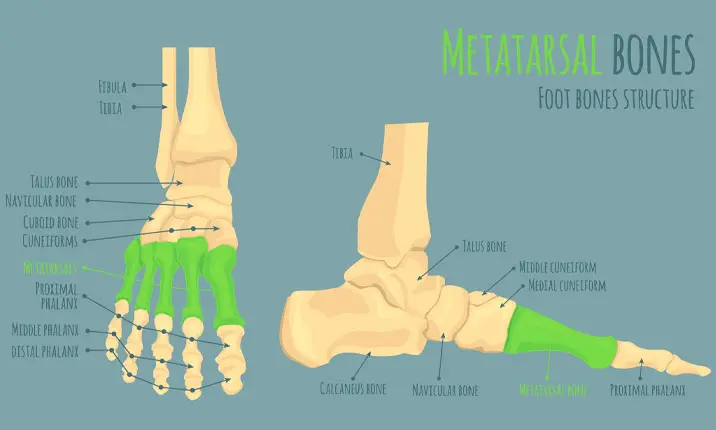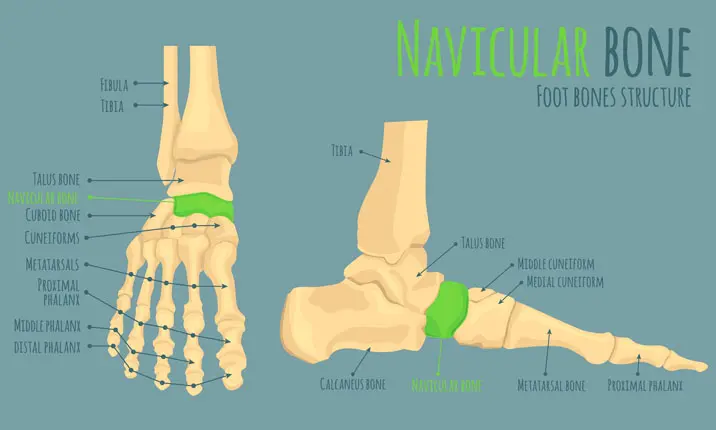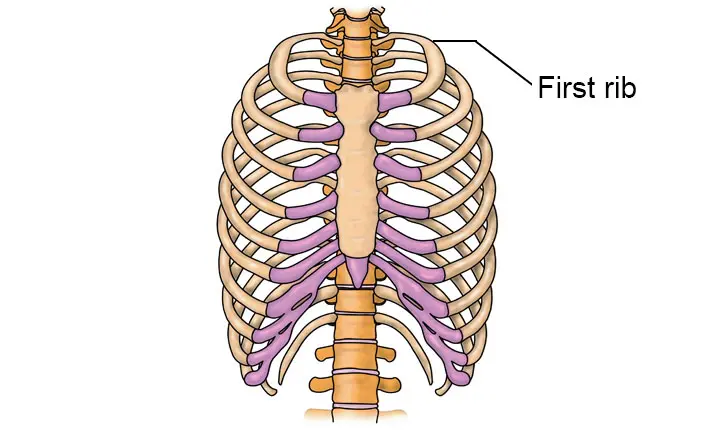Everyone knows the merits of an active lifestyle, but too few recognise the need to take a break when they experience discomfort. After all, as the saying goes, no pain, no gain, right?
As with many things in life, moderation is key. Exercising too much can overexert the body and cause complications. A stress fracture is one painful injury that could develop gradually without you realising till it's too late.
What are stress fractures?
Stress fractures are tiny cracks on the bone that are caused by accumulated damage to the bone when there is repeated impact on the same area. These fractures develop when muscles become fatigued and cannot absorb the added shock from overexertion. The pain felt from stress fractures is distinct from other conditions in that it intensifies during the workout and dissipates during rest.
Stress fractures are most common in the weight-bearing bones of the lower leg and foot. The risk of incurring such an injury is highest among track and field athletes and military recruits who carry heavy packs over long distances. However, anyone can sustain a stress fracture, for example, when you start a new exercise programme and do too much too soon.
Symptoms of stress fractures
The pain from a stress fracture is usually barely noticeable initially but tends to worsen over time. The tenderness usually starts at a specific spot and decreases during rest. There might be swelling around the painful area.
Causes of stress fractures
A common cause of stress fractures is increasing the amount or intensity of an activity too quickly. There are several factors that can increase your risk of stress fractures, such as:
- High-impact sports, such as track and field, basketball, tennis, dance or gymnastics
- Sudden increase in the intensity, duration or frequency of activity
- Women, especially those who have abnormal or absent menstrual periods
- People with flat feet or high, rigid arches
- Weakened bones due to conditions such as osteoporosis
- Having had a previous stress fracture
- Lack of nutrients, such as vitamin D and calcium
Types of stress fractures
Metatarsal stress fracture
Metatarsal bones are the long bones in the foot that link the ankle to the toes. There is usually pain or swelling towards the front or middle of the foot. Like hip stress fractures, such fractures are common when runners intensify their training. Do note that those with osteoporosis or inflamed joints are at greater risk of metatarsal stress fractures. People with bunions are also more prone to stress fractures in the neighbouring metatarsals due to the altered biomechanics.
Metatarsal stress fractures are a common occurrence in athletes, particularly in gymnasts, ballet dancers and hikers as their activities place continual stress on the feet.
Navicular stress fracture
The navicular is one of the tarsal bones in the ankle, sitting above the heel bone, on top of the middle of the foot.
You may experience pain across the inside arch of the foot or a vague mid-foot ache just past the ankle joint. Navicular stress fractures are common because compressive forces are focused on this bone when the foot hits the ground. The low blood supply in this region makes the healing of minor injuries more difficult, thus injuries are more likely to develop into a stress fracture.
Navicular stress fractures are more common in high-impact sports such as sprinting, jumping, hurdling, basketball and soccer.
Tibia stress fracture
There are 2 shin bones in each lower leg and the larger of the two is the tibia bone. As a weight bearing bone, the tibia cracks when muscles are unable to absorb the stress and hence rely on the bone. Stress is often created by repeated pounding of the foot on hard surfaces. Patients generally experience pain at the shin bone which increases with activity and decreases with rest.
Tibia stress fractures are more common in volleyball players, runners and gymnasts.
Rib stress fracture
There are 12 ribs each on the left and right, and the first rib is the most susceptible to injury. This is because the first rib is weaker and thinner due to grooves for blood vessels to travel. Patients are likely to notice pain on the side of their neck, upper back or back of the shoulder. The pain may be exacerbated by deep breathing, coughing or moving the arm over the head.
Rib stress fractures are more common in sports that involve vigorous shoulder motions, such as rowing, baseball, dance and windsurfing.
Hip stress fracture
A hip stress fracture is a serious injury to the ball of the hip joint. Patients typically experience aching groin pain. This pain may worsen when lying down or when the foot hits the ground when running or hopping. Hip stress fractures that are displaced (misaligned bones) may lead to serious complications like hip osteonecrosis, a condition where blood supply to the hip bone is affected.
Hip stress fractures are more common in long-distance runners, military recruits and mid-impact sports athletes.
How to prevent stress fractures
- Cross training. This ensures that stress is evenly distributed across different muscles. You could try a cross-training routine that has a low impact, such as swimming or cycling to substitute a running session.
- Get adequate nutrition and calcium. It is also important to include calcium-rich foods to support bone growth. Good sources of calcium include dairy foods, green leafy vegetables, soya drinks supplemented with calcium, bread made with calcium-fortified flour and fish with bones you can eat, such as sardines.
- Use proper footwear. Shoes lose their cushioning and support over time and hence, athletes should replace old sport shoes. As a guide, after clocking 500 kilometres with one pair of shoes, consider replacing it with a new pair.
- Make progress slowly in any sport. This means to gradually increase the duration and intensity of your workouts to manage stress placed on your body.
How to treat stress fractures
If you think you might be suffering from a stress fracture, stop exercising immediately and consult a doctor. While x-ray scans may not be conclusive, bone scans or magnetic resonance imaging (MRI) are effective in identifying the condition.
The common prescription is rest, anti-inflammatory medication, stretching and muscle strengthening.
RICE treatment for stress fractures
The RICE method is usually one of the first treatments your doctor would recommend for your injury.
Rest. Resting as much as possible for the first 2 days after injury. Your injury may take 6 – 12 weeks to heal, depending on its severity. If you really have to stay fit for your next marathon or competition, limit yourself to low-impact workouts or engage in light cross-training.
Ice. Apply an ice pack, covered with a light, absorbent towel for 15 – 20 minutes every 2 to 3 hours in the first 2 days after your injury. This helps to reduce pain and swelling.
Compression. Wrap the affected area snugly with an elastic medical bandage to prevent swelling.
Elevation. Raise the sore body part above your heart level to reduce pain, throbbing and swelling. For example, you can use pillows to prop your leg up when sitting on the sofa.
Medications
If the stress fracture is causing you persistent pain or discomfort, your doctor may recommend over-the-counter pain relief medication such as paracetamol.
Non-surgical treatment
Your doctor may recommend a plaster cast, crutches or a walking boot or brace for a few weeks to reduce or eliminate stress on the injured bone.
Stress fracture recovery
When you notice that the swelling has gone down to the point you can see skin creases, you can start putting a little weight on the area. You might still need to use crutches or a cane. It is usually fine to put your full weight on the area 2 weeks after your injury.
Most stress fractures heal in about 6 – 8 weeks. Being able to walk without pain is an indication that the injured bone has healed completely and you can likely return to the activity that caused the stress fracture. Your doctor may take an X-ray imaging to be sure that the fracture has healed.
Your doctor is likely to recommend that you undergo physical therapy after your stress fracture has healed. This can be done with the help of physiotherapy and rehabilitation personnel using specialised exercise equipment that will allow you to improve muscle strength and flexibility as well as build bone. This is important to prevent a future fracture.
Surgical treatment
Occasionally when stress fractures don't heal after non-surgical treatment, surgery to stabilise the fracture and enhance healing of the bone may sometimes be needed.

















